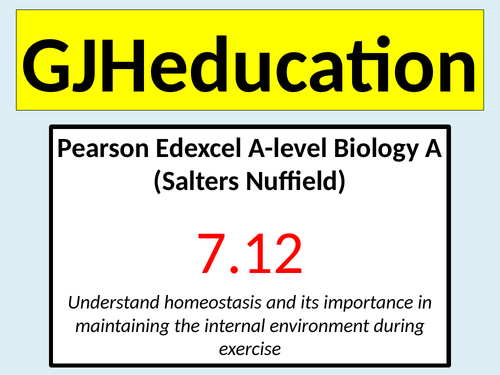

This lesson describes the role of the hypothalamus and the mechanisms of thermoregulation that maintain the body in dynamic equilibrium during exercise. The PowerPoint has been designed to cover point 7.12 of the Pearson Edexcel A-level Biology A (Salters Nuffield) specification.
Students were introduced to homeostasis at GCSE and this lesson has been written to build on that knowledge and to add the key detail needed at this level. Focusing on the three main parts of a homeostatic control system, the students will learn about the role of the internal and peripheral thermoreceptors, the thermoregulatory centre in the hypothalamus and the range of effectors which bring about the responses to restore optimum levels.
The following responses are covered in this lesson:
- Vasodilation
- Increased sweating
- Body hairs
In each case, time is taken to challenge students on their ability to make links to related topics such as the arterioles involved in the redistribution of blood and the high specific latent heat of vaporisation of water.
Something went wrong, please try again later.
This resource hasn't been reviewed yet
To ensure quality for our reviews, only customers who have purchased this resource can review it
Report this resourceto let us know if it violates our terms and conditions.
Our customer service team will review your report and will be in touch.